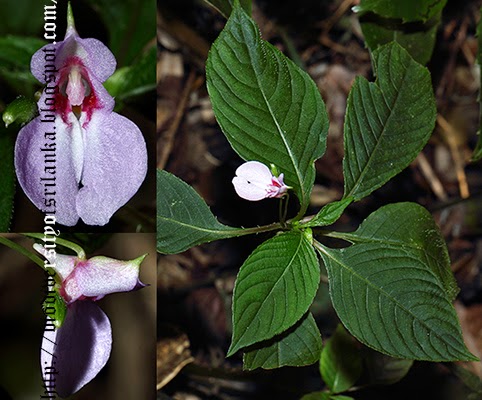Anon. 1946. Bird Notes. Loris. 4(2):330-333.
Banks, J. & Banks, J. 1981. Wilsons Phalarope or Marsh Sandpiper. Loris. 15(6):345-346.
Cameron, R.Mcl.L. 1970 Notes from the Ceylon Bird Club-1969/70. Loris. 12(1):62-63.
Cave, W.A. 1907 Rare Colombo birds. Spolia Zeylanica. 5(17):65
Cave, W.A. 1912 The birds of Colombo. Spolia Zeylanica. 8(30):94-115.
de Silva, R.I. 1992. First Record of Nordmann's Greenshank Tringa guttifer from Sri Lanka. Loris. 19(6):195-196.
de Silva, R.I. & Perera, L. 1993. The Long -Billed Plover Charadrius placidus - A first record from Sri lanka. Loris. 20(2):52-53.
de Silva, R.I. 2001. The Rufous - necked Stint (Calidris ruficollis) in Sri Lanka. Loris. 22(5):48.
Ebbels, D.L 1961 Notes from Ceylon Bird Club January-June 1961 Loris 9(2) 115-16
Hoffmann, T. W. 1974. Notes From The Ceylon Bird Club 1970-1973. Loris, 13(4), 211-214.
Hoffmann, T. W. 1975. Notes From The Ceylon Bird Club, 1974. Loris, 13(5), 275-276.
Hoffmann, T. W. 1978. Bird Club Notes (1977). Loris, 14(5), 289-290.
Hoffmann, T. W. 1979. Note from the Ceylon Bird club 1978. Loris, 15(1), 6-8.
Hoffmann, T. W. 1980. Notes from the Ceylon Bird Club 1979. Loris, 15(3), 157-159.
Hoffmann, T. W. 1981. Notes from the Ceylon Bird Club 1980. Loris, 15(5), "283-284,292".
Hoffmann, T. W. 1983. Notes from the Ceylon Birds Club. Loris, 16(3), 132-134.
Hoffmann, T. W. 1986. Notes from the Ceylon Bird Club 1985. Loris, 17(3), 99-101.
Hoffmann, T. W. 1995. Ceylon Bird Club Notes 1994. Loris, 20(5), 226-227.
Hoffmann, T. W. 1996. Ceylon Bird Club Notes 1995. Loris, 21(1), 16-18.
Hoffmann, T. W. 1999. Ceylon Bird Club Notes, 1997. Loris, 22(1), 57-58.
Kotagama, S., Ratnavira, G. 2010. An illustrated Guide to the Birds of Sri Lanka. Field Ornithology Group of Sri Lanka, Colombo.
Legge V., 1880. A History of the birds of Ceylon 1983 second edition.
Maduranga, H. G. S. 2002 Sharp-tailed Sandpiper Calidris acuminata (Horsfield) 1821; a sight record at Maha Lewaya, Hambantota District Sri lanka Naturalist 5(1): 08-10
Modder E. 1961 The Great Snipe Loris 9(2) 135-36
Nevill, H. 1867-1870. Description of two birds new to the recorded fauna of Ceylon. J. Roy. Asiatic Soc. (Cey. Br.), 4(14), 138-140.
Norris, C. E. 1950. Migrants, 1949-1950. Loris, 5(4), 171.
Perera T. 2005 Are those birds "Grey Headed Lapwings" ? Malkoha 27(1):3.
Phillips, W. W. A. 1940. The Occurrence of Swinhoe's snipe (Capilla Megala) in Ceylon Loris 2(2) 124
Phillips, W. W. A. 1941. Ornithological observations part 2 Loris 2(4) 234-237
Phillips, W. W. A., 1950. The Mystery Snipe. Loris, 5(4), 174-175
Phillips, W. W. A. 1956 The Siberian pectoral sandpiper Erolia acuminata - A new addition to the avifauna of Ceylon Spolia Zeylanica 28(1)
Phillips W.W.A., 1978. Annotated checklist of the Birds of Ceylon (Sri Lanka) 1978 revised edition.
Phillips, W. W. A. 1980. The Avifauna of Sri Lanka. Spolia Zeylanica, 35, 155-202.
Ranasinghe, D. B. 1997. Gaps on Field data for Sri Lankan Birds. Loris, 21(4), 170-172.
Ryan, J. 1907. The birds of Dimbulla. Spolia Zeylanica, 5(17), 13-16.
Siriwardana, U. 2003. Report from the Ceylon Bird Club for 2002. Loris, 23(3&4), 36-39.
Siriwardana, U. 2005. Report from the Ceylon Bird Club for 2004. Loris, 24(1&2), 33-35
Siriwardana, U. 2007 Report of the Ceylon Bird Club 2006 Loris, 24(5 & 6), 50-56
Siriwardana, U. and Senanayake T. 2010 Sri Lanka Waterbird census 2009 and 2010 Loris, 25(5), 34-36
Villiers, G. H. 1944 Capella nemoricola. Loris, 3(4), 137.
Wait W.E., 1931. Manual of the Birds of Ceylon. 2nd edition. Colombo Museum.
Wait, W. E., 1936 Occurrence of Capella Megala Swinhoe in Ceylon Spolia zeylanica 19 337-338
Warakagoda, D. 1999. Ceylon Bird Club Notes,1998. Loris, 22(2), 33-34.
Warakagoda, D. 2000. Report from the Ceylon Bird Club for 1999. Loris, 22(4), 23-25.
Warakagoda, D. & Siriwardana, U., 2004. Report from the Ceylon Bird Club for 2003 Loris, 23(5&6), 37-41
Warakagoda D. &
Sirivardana U., 2011. Report from the Ceylon Bird Club for 2008-2011, Loris 26
(1&2)
















